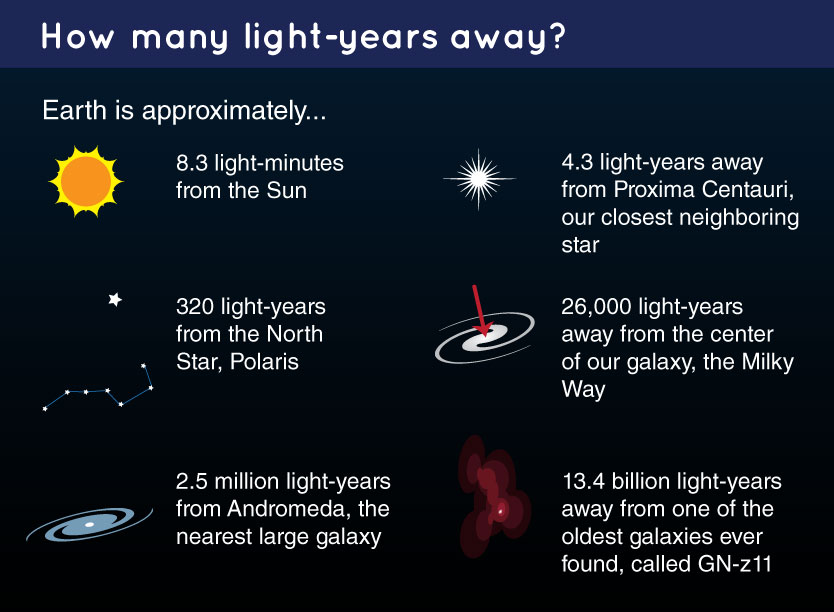Understanding Cosmic Definitions
Our understanding of the universe begins with distinguishing between the part we can observe and the entire cosmos. The observable universe refers to the region from which light has had time to reach us since the beginning of cosmic expansion, while the entire universe encompasses all of space and matter—even regions we cannot see. In essence, every observer is at the center of his or her own observable sphere, though the whole universe may have no center and may be vastly larger or even infinite[4][5].
Size of the Observable Universe
Multiple measurements and techniques have led scientists to determine that the observable universe has a diameter of roughly 93 billion light‐years. This value is derived from the fact that, although the universe is about 13.8 billion years old, space itself has expanded over time. As a result, distant objects that originally emitted light 13.8 billion years ago are now approximately 46.5 billion light-years away from us in every direction[3][5]. In other words, the observable universe forms a sphere with a radius of about 46.5 billion light-years, giving it an overall diameter near 93 billion light-years[8][12].
The Entire Universe Versus the Observable Portion
Although the observable universe is enormous, it is only a fraction of the entire cosmos. Many cosmological models suggest that the entire universe may be vastly larger than the portion we can see. Some estimates indicate that the total size could be hundreds of times—if not infinite—in extent compared to the observable region. For instance, one approach based on Bayesian model averaging suggests that our universe might be at least 250 times the size of the observable universe, meaning that while the visible part spans about 93 billion light-years in diameter, the whole universe could be many trillions of light-years across or even unbounded[1][7][6].
How Do Scientists Measure Cosmic Distances?

Measuring the vast scales of the cosmos involves a series of techniques that build one upon the other. Astronomers first use standard candles such as Cepheid variable stars, whose brightness variations are directly related to their intrinsic luminosity. By comparing their actual brightness with how bright they appear from Earth, distances to nearby galaxies can be determined accurately[2][13]. For more distant objects, techniques involving Type Ia supernovae, redshift measurements, and the cosmic microwave background (CMB) radiation are employed. The CMB, which represents the leftover radiation from the early universe, provides further clues to the scale of cosmic expansion. These multiple distance-measurement techniques—involving parallax at close ranges and redshift at great distances—allow scientists to create a cosmic distance ladder that leads to the current estimates of the observable universe’s dimensions[9][10].
Cosmic Expansion and Future Measurements
One of the key discoveries of the 20th century was that the universe is expanding. Edwin Hubble’s observation that galaxies are receding from us in proportion to their distance laid the foundation for this concept. More recent studies have shown that this expansion is accelerating due to a mysterious component known as dark energy[14]. While the most straightforward model incorporates dark energy as a constant—a term popularized by Einstein’s cosmological constant—new evidence suggests that dark energy may evolve over time, which would have profound implications for the ultimate size and fate of the universe[14]. Advanced instruments like the Hubble Space Telescope, and its successors, continue to refine our measurements and spur new theories. As our tools and methods improve, we may not only refine our estimates of size and age (currently about 13.8 billion years old) but also uncover deeper insights into the nature of dark energy and the universe’s long-term evolution[13][14].
Implications and Ongoing Research
The sheer vastness of the universe has both philosophical and scientific implications. The fact that the observable universe alone spans approximately 93 billion light-years in diameter illustrates how small our local region is compared to the whole cosmos. Nevertheless, this observable part still contains an immense number of galaxies—estimated to be in the trillions—with each galaxy composed of billions of stars and countless other forms of matter[5][11]. The ongoing study of the cosmic distance scale and dark energy is critical not just for understanding the geometry and size of the universe, but also for predicting its fate. Whether the universe will continue to expand indefinitely (leading to a Big Freeze scenario), halt, or even collapse under its own gravity remains an open question. What is clear, however, is that with every new observation, our picture of the universe grows richer and more complex, inviting further research into areas that challenge our current theories[7][14].
Get more accurate answers with Super Pandi, upload files, personalized discovery feed, save searches and contribute to the PandiPedia.
Let's look at alternatives:
- Modify the query.
- Start a new thread.
- Remove sources (if manually added).



